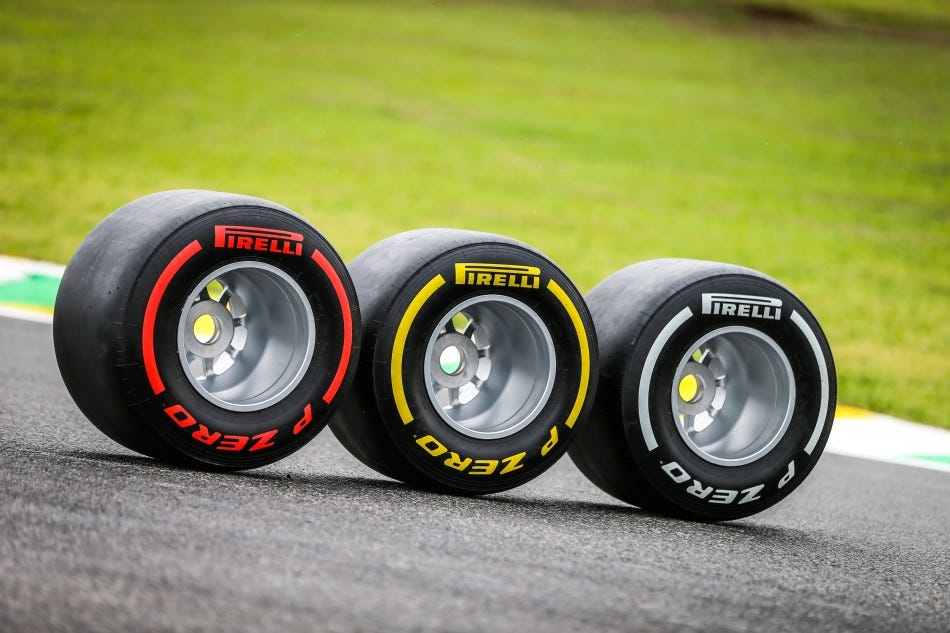Understanding The Tire Allocation In Formula 1: How Many Tires Do F1 Teams Get?
Formula 1 racing is a high-octane sport known for its cutting-edge technology and thrilling performances. Among the critical components that contribute to a team's success is the tire allocation provided by the FIA (Fédération Internationale de l'Automobile). Understanding how many tires do F1 teams get can provide insights into the strategies they employ during a race weekend. In this article, we will explore the tire allocation rules, the different types of tires available, and their impact on race strategies.
The tire allocation in Formula 1 is not just about numbers; it’s a complex system designed to enhance competition while ensuring safety on the track. Each race weekend presents unique challenges, and teams must carefully manage their tire usage to optimize performance. By delving into how many tires do F1 teams get, we can better appreciate the strategic decisions made by team principals and drivers alike during each Grand Prix.
As the racing season progresses, tire performance evolves, and teams must adapt their strategies accordingly. The allocation of tires can significantly affect race outcomes, making it a crucial aspect for both fans and teams to understand. Join us as we answer the burning questions surrounding tire allocation in Formula 1 and uncover the intricate dance between tire management and race strategy.
How Many Tires Do F1 Teams Get Over a Race Weekend?
During a typical Formula 1 race weekend, teams are allocated a specific number of tires, which include different compounds for various track conditions. The allocation is designed to give teams flexibility in their strategies while also managing the wear and tear on the tires. So, how many tires do F1 teams get? The answer depends on several factors, including the type of race weekend and the number of practice sessions.
Breakdown of Tire Allocation for F1 Teams
Typically, each team is provided with a set number of tires for each race weekend. The breakdown usually includes:
- 13 sets of dry tires (slicks) - This includes a mix of soft, medium, and hard compounds.
- 4 sets of wet tires (intermediates and full wets) - These are used in rainy conditions.
This allocation allows teams to experiment with different compounds during practice sessions, ensuring they find the right setup for qualifying and the race itself.
What Types of Tires Are Available to F1 Teams?
F1 tires come in various compounds, each designed for specific track conditions. Understanding what types of tires are available can help in grasping how many tires do F1 teams get. The primary types include:
Dry Tires (Slicks)
These tires come in three main compounds: soft, medium, and hard. Each compound varies in grip and durability, affecting lap times and tire wear. The softer the compound, the better the grip but the quicker it wears out.
Wet Tires
Wet tires are divided into two categories: intermediates and full wet tires. Intermediates are used for light rain, while full wets are designed for heavy downpours. The allocation of wet tires is crucial, especially in unpredictable weather conditions.
How Do Teams Strategize with Tire Allocation?
With the knowledge of how many tires do F1 teams get, strategizing becomes a critical aspect of race preparation. Teams analyze tire performance data from practice sessions to determine the optimal race strategy. Key considerations include tire degradation, track temperature, and the potential for rain.
Managing Tire Wear During the Race
One of the biggest challenges for teams is managing tire wear throughout the race. Teams must decide when to pit for fresh tires, balancing the need for speed against the risk of losing track position. Effective tire management can lead to a significant competitive advantage.
How Do Different Tracks Affect Tire Strategy?
The characteristics of each track play a vital role in determining tire strategy. Some tracks are known for being hard on tires, requiring teams to use more conservative approaches, while others allow for aggressive tire strategies. For example:
- Circuit de Monaco - Tight corners lead to high tire degradation.
- Monza - Fast straights allow for more aggressive tire usage.
What Happens if a Team Runs Out of Tires?
Running out of tires during a race can lead to disastrous consequences. If a team exhausts its allocated tires, it may have to race on worn-out tires, significantly hampering performance. This scenario highlights the importance of effective tire management throughout the weekend.
Are There Penalties for Mismanagement of Tire Allocation?
Formula 1 enforces strict rules regarding tire allocation, and teams can face penalties for mismanagement. These penalties can range from fines to grid penalties in subsequent races, emphasizing the importance of adherence to the rules.
Conclusion: The Importance of Tire Strategy in F1
Understanding how many tires do F1 teams get provides valuable insights into the strategic element of the sport. As teams navigate the complexities of tire management, they must balance performance with durability to achieve success on the track. The allocation of tires is not merely a logistical challenge; it is a vital component that can make or break a race weekend.
In conclusion, tire strategy in Formula 1 is an intricate dance of calculations, performance evaluations, and decision-making under pressure. As the sport continues to evolve, so too will the strategies surrounding tire usage, keeping fans and teams alike on the edge of their seats.
Soaring Beyond Limits: The World Of Flight Height YouTuber
Timeless Melodies: The Best Songs About Childhood
Exploring The Life And Ministry Of Loren Larson, Preacher


